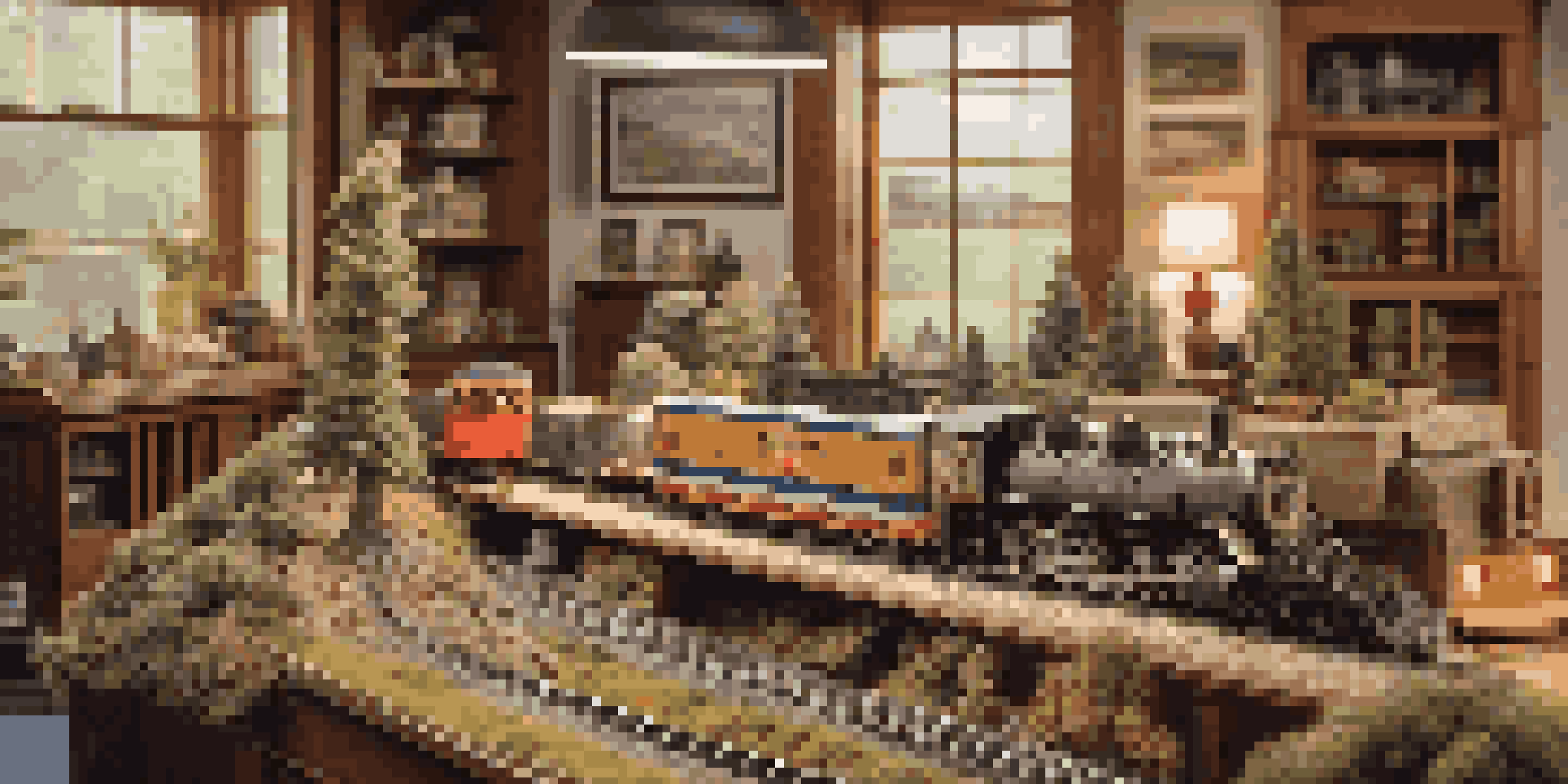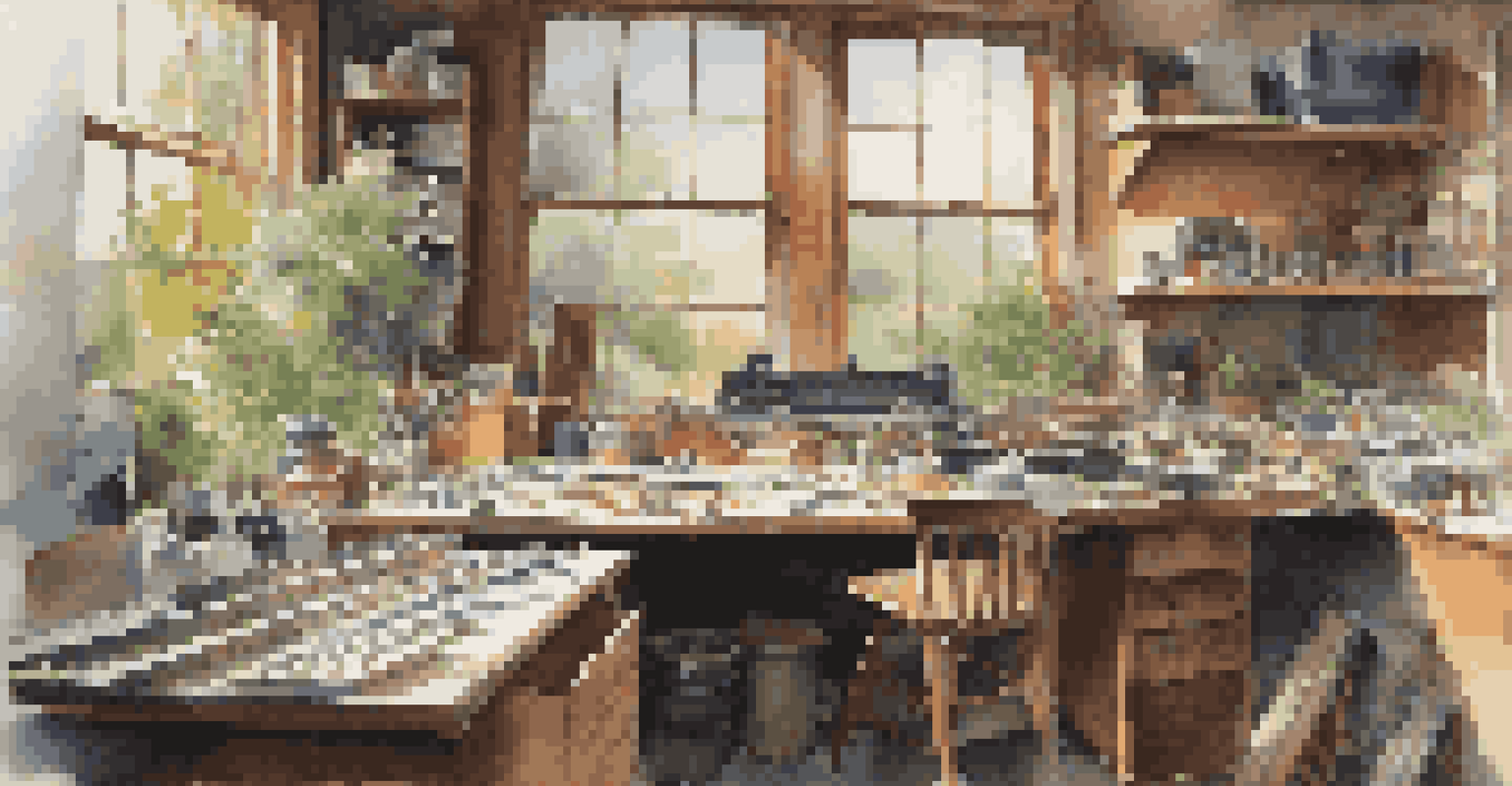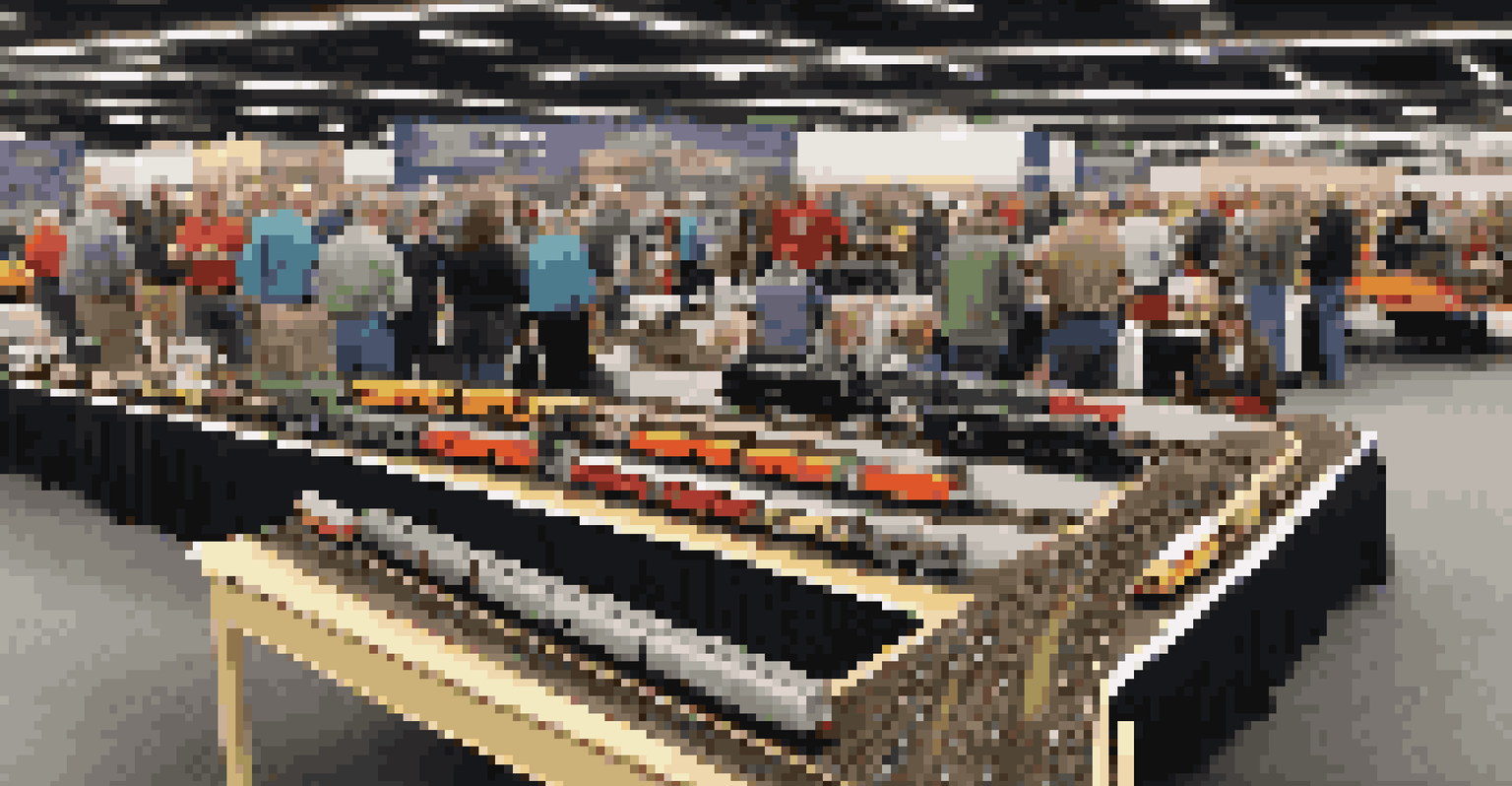Starting a Model Railroad: Key Considerations and Tips

Understanding the Basics of Model Railroading
Before diving into model railroading, it's essential to grasp the basics. This hobby involves building miniature train layouts that can mimic real-life rail systems. You'll work with tracks, trains, scenery, and sometimes even electronics to bring your vision to life.
The journey of a thousand miles begins with one step.
Many enthusiasts start by exploring different scales, such as HO, N, or O, which refer to the size of the models. Each scale has unique characteristics and requires varying amounts of space. Understanding these fundamentals will help you make informed choices as you begin your journey.
Additionally, you might want to familiarize yourself with the terminology used in the hobby. Terms like 'loco' for locomotive or 'diorama' for a scenic display can be quite common. A bit of research will go a long way in making your modeling experience more enjoyable.
Choosing the Right Space for Your Railroad
Selecting the appropriate space for your model railroad is crucial. Whether it's a dedicated room, a corner of your garage, or a portable layout, the space will dictate the scale and complexity of your project. Take a moment to visualize how much room you can realistically allocate for your trains.

Consider the environment too—make sure the space is dry and free from extreme temperatures. A stable climate will protect your models from damage and ensure they operate smoothly. Lighting is also important; good visibility will help you work on details without straining your eyes.
Understanding Model Railroading Basics
Getting familiar with scales and terminology is essential for a rewarding start in model railroading.
Lastly, think about accessibility. You want to enjoy your hobby without feeling cramped or frustrated. Ensure that you can easily reach all parts of the layout, especially if you're planning to operate trains frequently.
Setting a Budget for Your Model Railroad
Budgeting is one of the most important considerations when starting a model railroad. The costs can quickly add up, from purchasing trains and tracks to scenery materials and tools. It's wise to set a clear budget and stick to it to avoid any surprises.
Creativity is intelligence having fun.
Start by listing the essential items you'll need for your layout. This may include trains, tracks, power supplies, and scenery. Prioritize these items based on what you believe will give you the most satisfaction and enjoyment in your project.
Don't forget to factor in ongoing costs, such as maintenance and expansion. As you get deeper into the hobby, you might find yourself wanting to add more features or upgrades. Keeping a running tally of your expenses will help you stay on track financially.
Researching and Selecting Your Model Railroad Scale
Choosing the right scale is a pivotal decision in model railroading. Each scale, whether HO, N, or O, offers its own set of advantages and disadvantages. For instance, HO is one of the most popular scales due to its balance of size and detail, making it easy to find products.
Consider your available space when selecting a scale. Larger scales like O require more room for both the layout and the trains, while smaller scales like N can fit into tighter spaces. The right scale should match your vision and the physical limitations of your chosen area.
Budgeting for Your Model Railroad
Setting a clear budget helps manage costs and prevents surprises as you build your model railroad.
Additionally, think about your level of experience. Beginners might prefer a scale with readily available resources and support. Joining local clubs or online forums can provide invaluable insights and recommendations based on your chosen scale.
Designing Your Model Railroad Layout
Designing a layout is where the fun begins! Start by sketching out a rough idea of what you want your railroad to look like. Consider the types of scenery you want to incorporate, from mountains to rivers, and how your trains will navigate through them.
Using software can also be incredibly helpful. Many programs allow you to visualize your layout in 3D, making it easier to see how everything will fit together. It can also help you experiment with different configurations without any physical commitment.
Remember to keep in mind the flow of your trains. Ensure there are smooth transitions between tracks and that your layout allows for continuous operation. A well-planned design can lead to hours of enjoyment as you watch your trains traverse the landscape you've created.
Gathering Essential Tools and Supplies
Having the right tools and supplies is vital for a successful model railroad project. Basic tools include track cutters, pliers, and a good-quality craft knife. These will help you with everything from assembling tracks to creating detailed scenery.
Consider investing in a workbench or a dedicated workspace where you can comfortably build and customize your models. Good lighting and organization will significantly enhance your efficiency and enjoyment. A clutter-free area can help spark your creativity.
Joining the Model Railroading Community
Connecting with fellow enthusiasts through clubs and events enriches your model railroading experience.
Don't forget about the materials for scenery, such as foam, paint, and greenery. Many hobby shops offer kits that can simplify the process. Building your scenery can be a rewarding experience, as it allows you to put your personal touch on the layout.
Joining a Community of Model Railroaders
One of the best parts of model railroading is the sense of community. Joining local clubs or online forums can provide a wealth of information and inspiration. You'll find fellow enthusiasts who are eager to share their experiences and help you along your journey.
Attending events like train shows or exhibitions is another great way to connect with others. These gatherings offer a chance to see impressive layouts, purchase unique items, and meet experts in the field. Networking with seasoned model railroaders can provide tips that you won't find in books.

Don't underestimate the value of collaboration. Many hobbyists work together on projects, allowing them to learn from one another. Sharing ideas and resources can elevate your skills and make the experience even more enjoyable.